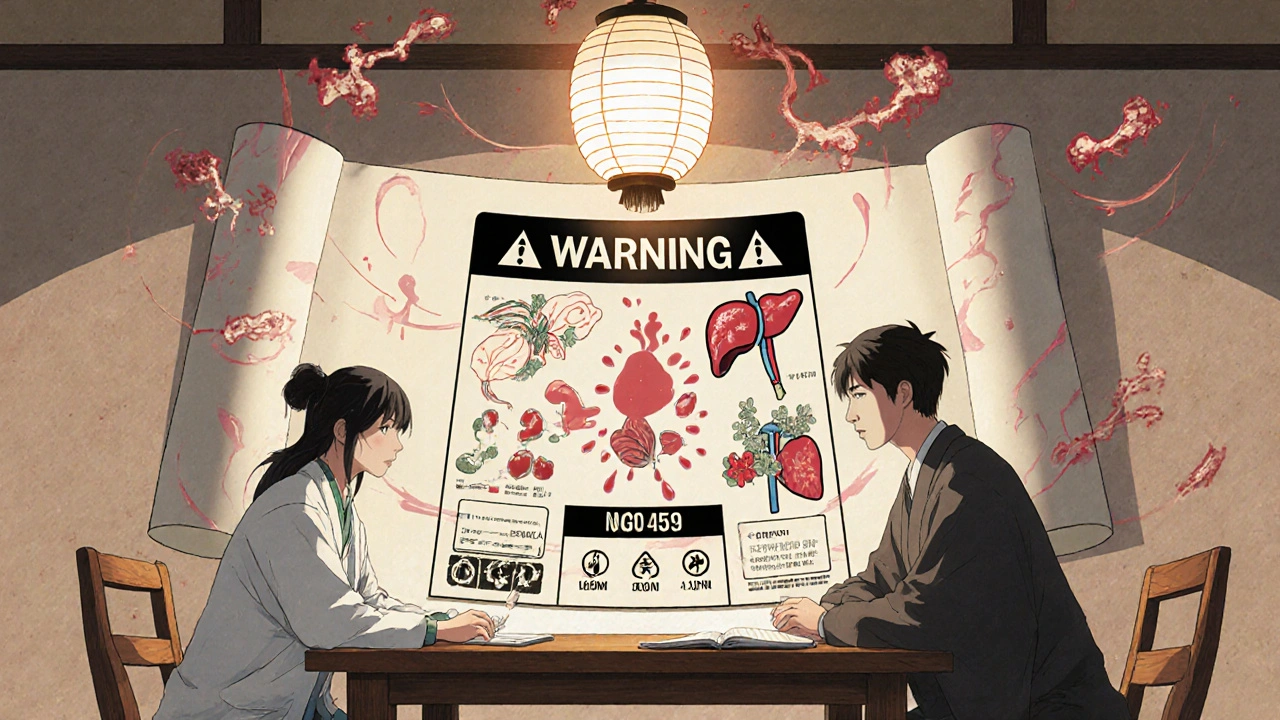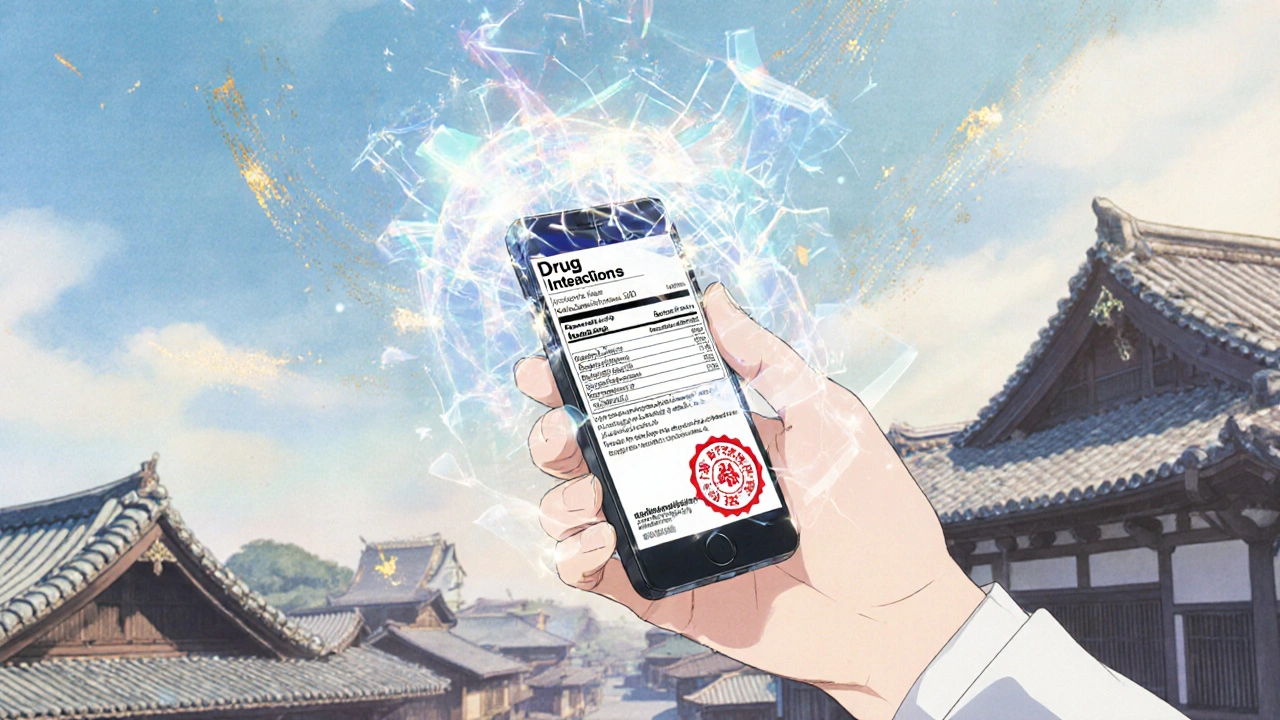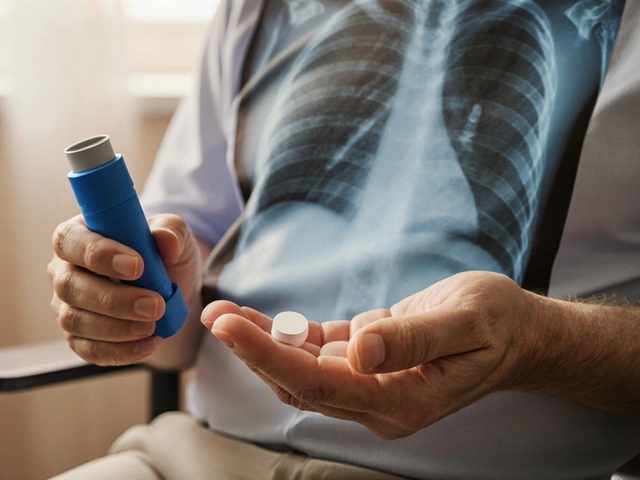FDA Label Safety Checker
Understand Drug Safety Terms
This tool helps you determine whether a condition represents a contraindication (do not use) or precaution (use with caution) based on FDA labeling standards.
What FDA Drug Labels Really Mean - And Why It Matters
When you pick up a prescription, the tiny print on the box and the thick booklet inside aren’t just paperwork. They’re legally binding instructions approved by the U.S. Food and Drug Administration (FDA). These labels tell doctors and patients exactly when to use a drug, when to avoid it, and what risks to watch for. But terms like contraindication, precaution, and indications can sound like jargon - until you know what they actually mean.
Indications and Usage: What the Drug Is Approved For
This is the first real section of any FDA-approved drug label. It doesn’t say "helps with" or "may improve." It says what the drug is officially approved to treat - and for whom. For example, the label for Keytruda doesn’t just say "treats cancer." It says: "Treatment of patients with unresectable or metastatic melanoma as a single agent or in combination with ipilimumab." That specificity matters. The FDA requires this section to be backed by solid clinical trials. If a drug isn’t proven to work for a certain group - like kids under 12 or people with kidney failure - it won’t be listed here. In 2023, 87% of new drug approvals included precise biomarker requirements in this section, meaning the label now tells doctors which patients are most likely to benefit based on genetic or molecular tests.
Contraindication: When You Must Not Use the Drug
This section is non-negotiable. A contraindication means: "Do not use this drug under any circumstances." The FDA defines it as "specific situations when the drug should not be used because it may be harmful to the patient." There are two types: absolute and relative. Absolute contraindications are clear red flags. For instance, Xarelto (rivaroxaban) lists "active pathological bleeding" as a contraindication. If you’re actively bleeding - from surgery, a stomach ulcer, or a brain hemorrhage - taking this blood thinner could kill you. Relative contraindications are trickier. They mean "use with extreme caution." For example, a drug might be contraindicated in someone with severe liver disease, but if the benefits outweigh the risks and the patient is closely monitored, it might still be used. The FDA requires these to be concise and specific. No vague warnings like "may cause side effects." It has to say exactly what condition, what reaction, and why.
Warnings and Precautions: The Fine Print That Can Save Your Life
This is where things get serious - and where the FDA puts its most urgent safety alerts. The label combines Warnings and Precautions into one section, ordered by severity. The most dangerous risks come first. If a drug carries a risk of sudden death, heart failure, or cancer, it gets a Boxed Warning - the biggest, boldest alert on the label. In 2020-2023, over 30% of new drug approvals had at least one Boxed Warning. Trulicity (dulaglutide), for example, warns: "Risk of thyroid C-cell tumors. Not for use in patients with a personal or family history of medullary thyroid carcinoma." This isn’t just a suggestion. It’s a legal requirement. The FDA mandates that each warning include: the risk, the clinical evidence behind it, and what doctors should do to reduce it. Precautions are slightly less urgent but still critical. They might say: "Monitor liver enzymes monthly" or "Avoid alcohol during treatment." These aren’t optional. They’re part of the drug’s approved use.

Drug Interactions: What Else You’re Taking Could Kill You
It’s not just about the drug itself - it’s about what else is in your body. The FDA requires manufacturers to list all clinically significant drug interactions. That means: if another medication, supplement, or even grapefruit juice changes how this drug works, it has to be in the label. Eliquis (apixaban), a blood thinner, warns against combining it with strong dual inhibitors of CYP3A4 and P-gp - drugs like ketoconazole or lopinavir/ritonavir. Why? Because those drugs can spike Eliquis levels in your blood by up to 200%, raising your risk of dangerous bleeding. The FDA doesn’t just rely on lab studies. They also include real-world data from their Adverse Event Reporting System (FAERS). Between 2019 and 2023, 12.3% of medication errors involving new drugs were linked to poorly communicated interactions. That’s why the FDA tightened its 2022 guidance: if there’s even a hint of danger, it goes on the label.
Dosage and Administration: How Much, When, and How
This section is where patients and providers actually use the label. It’s not just "take one pill daily." It’s detailed. For Keytruda, it says: "200 mg every 3 weeks or 400 mg every 6 weeks." It tells you whether to take it with food, how to prepare an IV infusion, and how to adjust the dose if you develop side effects. The FDA requires this section to be clear, usable, and tailored to special populations - seniors, kids, people with kidney or liver problems. In 2023, this was the second most common section needing updates after approval. Why? Because new data keeps coming in. Maybe a study shows that patients over 75 need lower doses. Or that a once-weekly dose works just as well as daily. The FDA demands that these updates be reflected quickly. Labels aren’t static. They evolve with science.
Description: The Science Behind the Pill
Most people skip this part. But it’s the foundation. The Description section gives the chemical identity of the active ingredient. For Humira, it says: "a recombinant human IgG1 monoclonal antibody." That tells you it’s not a small molecule pill - it’s a biologic, made from living cells. It includes the molecular weight, structural formula, and sometimes stereochemistry. This isn’t for patients. It’s for doctors and pharmacists who need to understand how the drug works at a molecular level - especially when comparing generics or biosimilars. The FDA requires this section to appear in both the Highlights and the full label. In 2023, 92% of new drugs met this requirement. If the description is wrong or incomplete, the label fails regulatory review.

Patient Counseling Information: What Your Doctor Should Tell You
This section is designed to be translated into plain language for patients. It’s the bridge between the dense medical label and what you actually need to know. Jardiance’s label tells patients: "Report symptoms of genital yeast infections, increased thirst or urination, and signs of ketoacidosis to your healthcare provider immediately." That’s actionable. It doesn’t say "may cause urinary tract infections." It says exactly what to watch for and what to do. The FDA requires this information to be free of jargon. Yet, a 2022 survey found that while 73% of doctors think this section is critical for patient adherence, only 41% of patients actually receive counseling based on it. That’s a gap - and it’s dangerous. If you’re not told what symptoms to report, you might ignore early signs of a serious reaction.
How Labels Are Changing - And Why You Should Care
All FDA drug labels are now submitted in a digital format called Structured Product Labeling (SPL). This isn’t just for computers. It powers tools that alert doctors in real time when a patient’s current meds might interact with a new prescription. The FDA is now testing interactive labels - where clicking "Drug Interactions" shows you a list of all affected medications, ranked by risk level. This pilot starts in early 2025. But even with these upgrades, a 2023 survey found that 44% of physicians still struggle to find key information quickly during busy clinic hours. The FDA’s next move? Standardizing section numbering and improving search in its Drugs@FDA database. By 2026, you’ll be able to type "contraindication for Xarelto" and get the exact answer - no scrolling through 50 pages.
Why This All Matters
FDA labels aren’t bureaucratic red tape. They’re the last line of defense against medication errors. A single misunderstood term - like thinking "precaution" means "it’s okay if you’re careful" - can lead to hospitalization or death. Knowing the difference between a contraindication and a precaution isn’t just for doctors. If you’re taking multiple drugs, have a chronic condition, or are caring for someone who is, understanding these terms helps you ask the right questions. Did your doctor check for interactions? Did they explain the boxed warning? Are you sure you’re taking the right dose? The label is your right to know. Use it.
What’s the difference between a contraindication and a precaution?
A contraindication means the drug should not be used at all because it could cause serious harm - like active bleeding with a blood thinner. A precaution means use the drug carefully, with monitoring or adjustments - like lowering the dose for someone with kidney disease. Contraindications are absolute red lights. Precautions are yellow lights - proceed with caution.
What is a Boxed Warning on a drug label?
A Boxed Warning is the FDA’s strongest safety alert. It’s a bold, black-bordered box at the top of the label that highlights the most serious risks - like death, organ failure, or cancer. If a drug has a Boxed Warning, it means there’s strong evidence linking the drug to a life-threatening reaction. For example, Trulicity has a Boxed Warning about thyroid cancer risk. Doctors are legally required to review this before prescribing.
Why do drug labels change after approval?
New safety data keeps coming in after a drug hits the market. Maybe 10,000 patients took it and 50 had a rare reaction. Maybe a new study shows a better dose for seniors. The FDA requires manufacturers to update labels within 30 days of confirming new risks. Between 2015 and 2020, 97% of label changes were made through a formal process called Category 2 changes - meaning they’re reviewed and approved by the FDA before going live.
Can I rely on the drug label if my doctor says something different?
The label is the official FDA-approved guidance. But doctors can prescribe a drug "off-label" - meaning for a use not listed on the label. That’s legal and common, especially in cancer or rare diseases. But if your doctor says to do something the label says not to - like take a drug with a contraindication - ask why. Make sure they’ve reviewed the risks and have a solid reason. The label is your baseline for safety.
Where can I find the official FDA label for my medication?
Go to the FDA’s Drugs@FDA database. Search by the brand or generic name. Every approved drug has a full label available for free. You can also ask your pharmacist for the "Prescribing Information" - that’s the official label. Don’t rely on websites or apps unless they link directly to the FDA’s version. Outdated or unofficial sources can be dangerously wrong.






Let’s be clear: contraindications aren’t suggestions-they’re legal landmines. The FDA doesn’t play around. If it says 'active pathological bleeding' is a contraindication for Xarelto, then your uncle’s 'I felt fine after a little bruise' doesn’t count. This isn’t yoga class. It’s pharmacology. And yes, I’ve seen ER docs ignore this. People died. Don’t be that guy.
Actually, your characterization of 'precaution' as a 'yellow light' is semantically imprecise. The FDA’s own glossary defines 'precaution' as 'a condition under which caution should be exercised in administering the drug,' not a traffic metaphor. Furthermore, the term 'yellow light' implies a temporary or negotiable state-whereas a precaution is a mandatory, documented monitoring protocol. You’re conflating colloquialism with regulatory precision. This is why public health literacy is in shambles.
It’s interesting how we treat drug labels like scripture, but rarely ask why they’re so inaccessible in the first place. The science is rigorous, yes-but the presentation is designed for regulators, not patients. I wonder if the FDA’s next evolution should be co-designed with actual people who take these drugs daily. Not just doctors. Not just pharmacists. The people who live with the side effects. Maybe then we’d stop treating labels as legal shields and start treating them as living guides.
Boxed warnings? Please. I’ve read the FDA’s own internal memos-those are political concessions, not scientific truths. They add them when lawsuits pile up, not when the data is conclusive. Trulicity’s thyroid warning? The real risk is in the patent expiration timeline, not the biology. The system is rigged to scare people so pharma can keep selling ‘new and improved’ versions of the same molecule. Wake up.
I’ve been on six different meds in the last five years. Every time I read the label, I feel like I’m being handed a death sentence written in Latin. The boxed warnings? They make my hands shake. The interactions? I have to cross-reference three apps just to know if my ibuprofen will kill me. And yet-no one ever explains this to me in person. My doctor says, ‘Take it.’ No context. No ‘this is why you’re scared.’ We’ve turned medicine into a transaction. But the human cost? It’s buried in the fine print. Someone needs to fix this. Not just the FDA. All of us.
lol who even reads these labels? my pharmacist gave me a pill in a bag with a sticky note that said ‘dont mix with grapefruit’ and that’s all i need. the fda is just trying to cover their ass so no one sues them when you get weird dreams from your blood pressure med. just take the damn thing and stop overthinking.
If you’re caring for an elderly parent or someone with multiple conditions, this stuff isn’t academic-it’s survival. I spent months learning the difference between contraindication and precaution because my mom was on five drugs. I printed the labels. I made a chart. I went to every appointment with questions. You don’t need a medical degree. You just need to care enough to ask. The FDA label is your power tool. Use it.
Structured Product Labeling? Digital formats? This is surveillance. The FDA is building a database to track every pill you take, every interaction, every doctor visit. They’re not doing this for safety-they’re doing it for control. Soon, your insurance will deny coverage if you don’t comply with their algorithmic label interpretation. This isn’t transparency. It’s a digital leash.
I think what Robin said hits the core. We treat these labels like sacred texts, but we’ve forgotten that medicine is a human practice. The FDA’s job is to protect. But doctors, pharmacists, and patients need to be the ones who translate that protection into care. I’ve had patients cry because they didn’t understand a Boxed Warning. I’ve had nurses tell me they skip the ‘Description’ section because it’s too dense. The system is broken-not because the science is wrong, but because we stopped listening to each other. Maybe the next update shouldn’t be about structure… but about empathy.